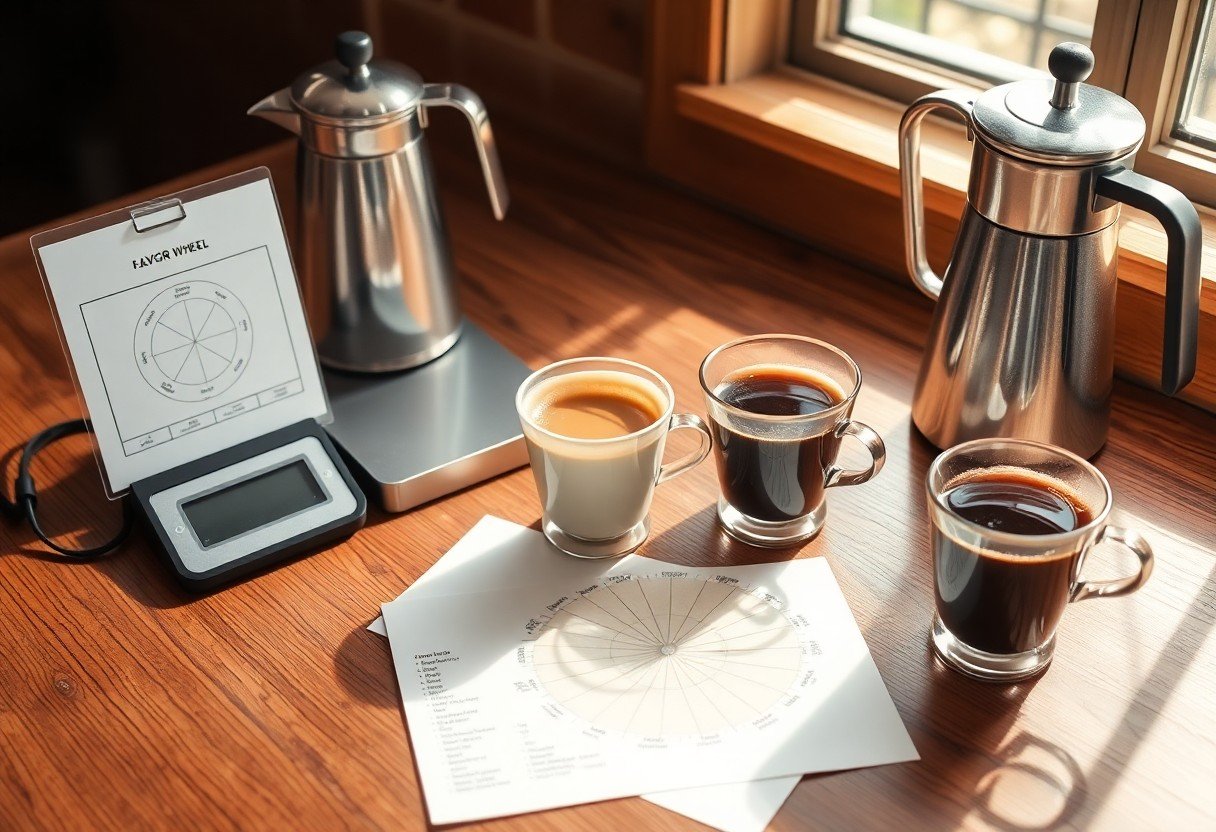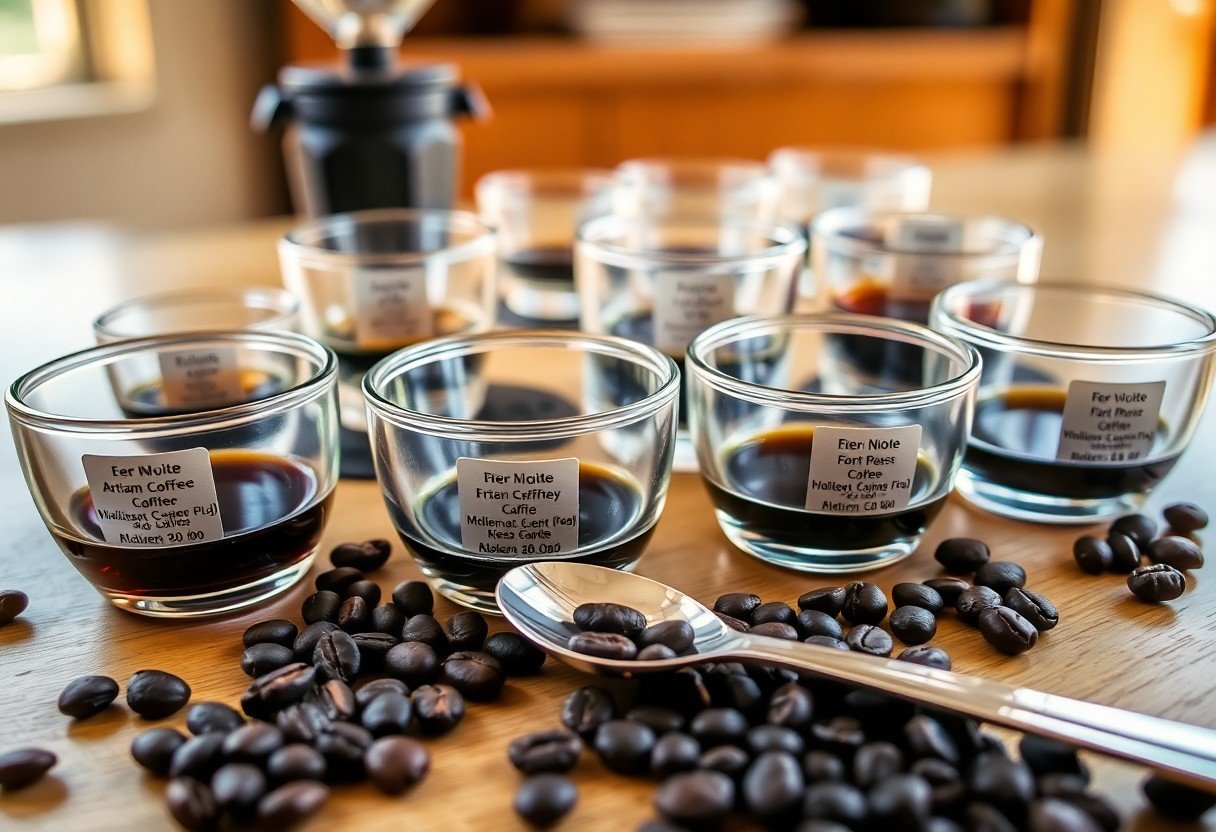Flavor exploration is an art that allows you to fully appreciate artisan coffee. By honing your sensory skills, you can distinguish between the complex notes and nuances that each unique blend offers. This guide will equip you with the techniques and insights needed to enhance your palate and elevate your coffee tasting experience. You’ll learn how to analyze aroma, taste, and texture, leading you to enjoy every cup like a true connoisseur.
Unpacking Flavor Profiles: A Coffee Connoisseur’s Guide
Understanding flavor profiles in coffee involves dissecting the complex interactions of various elements. Artists of flavor, experienced coffee drinkers can identify distinct notes by considering factors such as origin, processing methods, and even brewing techniques. Whether it’s the fruity brightness of an Ethiopian Yirgacheffe or the chocolatey depth of a Colombian Supremo, you’ll learn to appreciate how these factors contribute to the overall tasting experience, elevating your coffee ritual into an exploration of sensory delight.
The Role of Terroir in Coffee Flavor
Terroir, the environmental conditions where coffee is grown, plays a pivotal role in shaping flavor. Elevation, soil type, and climate contribute to the unique characteristics of each coffee varietal. For instance, coffees from high altitudes typically possess a pronounced acidity and brightness, while those grown in rich volcanic soil may exhibit lush, complex flavors. Understanding terroir enables you to connect the dots between where your coffee comes from and its unique taste profile.
Key Varietals and Their Signature Notes
Coffee varietals are like different grape varieties in winemaking, each bringing distinctive flavors to the cup. For instance, the Bourbon varietal often showcases sweet, caramel-like notes, while the Geisha varietal is celebrated for its floral aromas and vibrant acidity. Understanding these nuances helps you select beans that align with your flavor preferences, enhancing your overall coffee experience.
Bourbon and Geisha represent just two of the many coffee varietals, each with its signature profile shaped by genetics and growing conditions. The Caturra varietal offers a bright, fruity taste, often highlighted by notes of citrus, whereas the Pacamara varietal combines large bean size with flavors of chocolate and tropical fruit. By learning about these key varietals, you can refine your palate and make more informed choices when selecting artisan coffees, leading to a richer tasting journey.
Developing Your Palate: Techniques for Flavor Recognition
Strengthening your coffee tasting abilities involves consistent practice and exploration. Start by sampling a wide variety of beans from different regions, roast levels, and processing methods. Take note of how each cup presents distinct flavors, textures, and aromas. Consider keeping a tasting journal, allowing you to document your thoughts as you refine your sensory experiences. Over time, you’ll develop a more sophisticated appreciation for the complexities of artisan coffee.
The Coffee Tasting Process: Sight, Smell, Savor
Begin the tasting process by observing the coffee’s color and clarity, noting any variations that may hint at its flavor profile. Slowly inhale the aroma, allowing the scents to fill your senses; identify floral, fruity, or nutty notes before taking a sip. As you savor, focus on the texture and mouthfeel, while pinpointing the taste attributes. This multi-sensory approach enhances your ability to discern and appreciate subtle flavor notes in every cup.
Common Flavor Descriptors and How to Use Them
Flavor descriptors enable you to articulate your coffee tasting experiences effectively. Familiarize yourself with terms like ‘bright,’ ‘smooth,’ ‘earthy,’ and ‘spicy’ to accurately convey what you taste. Use these descriptors as reference points when describing coffee characteristics in conversations or in your tasting journal. Linking specific flavors to familiar items, such as “chocolate” or “citrus,” can improve clarity and enhance your sensory vocabulary, making it easier to share your experience with others.
Common flavor descriptors serve as a bridge between your personal experience and the broader coffee community. Terms like ‘fruity’ can denote a range of flavors, from berry to citrus, while ‘nutty’ might bring to mind hazelnuts or almonds. The specificity of your descriptors is key; for instance, saying a coffee has “dark chocolate” over “just chocolate” paints a richer picture. Engaging with a flavor wheel can offer guidance, allowing you to explore layers of taste that enhance your coffee appreciation and improve communication about your preferences.

Elevating Your Tasting Experience: Tools of the Trade
Your coffee-tasting journey can be significantly enhanced with the right tools. Investing in quality equipment not only helps extract the best flavors but also allows you to experiment with your brewing techniques. Gadgets like a scale for precise measurements, a grinder that suits your brew method, and a thermometer for optimal water temperature contribute to a sensory experience that’s both enjoyable and enriching.
Essential Brewing Equipment for Optimal Flavor Extraction
Why a Flavor Wheel is Your Best Friend

Breaking Down the Brew: Analyzing Flavor Components
To truly appreciate artisan coffee, dissecting its flavor components transforms your tasting experience. Start by paying attention to the aroma, which can signal various flavor notes before the first sip. As you taste, focus on specific attributes such as sweetness, bitterness, and mouthfeel, while identifying unique flavors like fruity, nutty, or floral. Understanding these elements allows you to differentiate between blends and origins, enabling a deeper connection with every cup you brew.
The Influence of Roast Levels on Flavor Dynamics
Different roast levels significantly alter a coffee’s flavor profile. Light roasts often exhibit bright, acidic notes, revealing the coffee’s origin characteristics, while medium roasts introduce balance between acidity and sweetness. Dark roasts tend to dominate with bold, bitter flavors, sometimes masking the subtleties of the beans. Experimenting with these levels can enhance your understanding and appreciation of the complexities each roast brings.
The Science of Acidity, Body, and Balance in Coffee
Acidity, body, and balance are crucial in defining a coffee’s overall taste. Acidity adds vibrancy and complexity, often manifesting as fruitiness or brightness. A full body contributes a rich mouthfeel, offering a satisfying weight on the palate. Balance occurs when these elements harmonize, resulting in a well-rounded flavor experience. Identifying the interplay between these components enhances your ability to evaluate and enjoy various coffees.
Acidity in coffee ranges from bright, fruity notes to smooth, mellow undertones, depending on the bean and brew method. The body’s sensation is influenced by the coffee’s natural oils, which can create a creamy or watery texture. Proper balance combines these characteristics, so a coffee that is overly acidic might feel sharp on the tongue without enough body to soften the experience. A well-balanced brew allows you to enjoy lingering flavors while minimizing any overwhelming sensations, leading to a satisfying cup that appeals to your taste preferences.
Beyond the Cup: The Cultural Context of Coffee Tasting
Understanding coffee goes far beyond its flavor; it reflects rich cultural narratives and traditions that have evolved over centuries. By exploring how various societies approach coffee tasting, you gain insights into the flavor profiles they favor and the stories that shape their appreciation. Each cup represents unique practices, rituals, and heritage that influence how you experience and interpret the flavors of artisan coffee.
Global Coffee Traditions and Their Unique Flavor Narratives
Different regions around the globe have cultivated distinct coffee traditions that influence how flavors are perceived. From the sweet, fruity notes celebrated in Ethiopian coffee ceremonies to the robust, earthy flavors found in traditional Turkish coffee preparation, these cultural practices create a narrative around each sip. As you engage with these traditions, you tap into a broader spectrum of flavors, enhancing your overall tasting experience.
How Cultural Palates Shape Coffee Perception
Your palate is shaped by your cultural background, which plays a key role in how you perceive coffee flavors. People raised in different culinary traditions tend to seek and recognize various notes based on their unique experiences. For instance, a person from a country that values chocolate flavors may appreciate them more in their coffee, while someone from a fruity wine culture might favor bright blueberry or citrus notes. This subjective experience can broaden your understanding of flavors and encourage you to explore beyond personal preferences.
Digging deeper, consider how your exposure to specific cuisines influences your tasting abilities. For example, if you’ve grown up enjoying spicy dishes, you may find yourself drawn to coffee varieties with hints of spice or complexity reminiscent of those flavors. Studies have shown that familiarity with certain tastes enhances your ability to identify nuanced notes in coffee. Engaging with diverse coffee traditions allows you to compare and contrast these flavors against your palate, deepening your appreciation for the artistry in each brew.
Summing up
Upon reflecting, you can enhance your coffee tasting skills by focusing on sensory details such as aroma, flavor, body, and acidity. Engage your palate actively, experimenting with different brewing methods to discover unique flavor profiles. Utilize tasting notes and aroma maps as guides to broaden your understanding. With practice, you’ll develop your own vocabulary for expressing the complexities of artisan coffee, allowing you to appreciate each cup more fully. By honing these techniques, you’ll confidently identify and articulate the rich flavor notes that make each coffee unique.
FAQ
Q: What are flavor notes in artisan coffee?
A: Flavor notes refer to the specific tastes and aromas found in the coffee, often described as fruity, nutty, floral, or chocolatey. These notes are influenced by the coffee bean’s origin, processing method, and roasting style.
Q: How can I develop my palate for identifying flavor notes?
A: To develop your palate, practice tasting different types of coffee. Take note of distinct flavors by using a flavor wheel, which illustrates various taste profiles. Regular cupping sessions can refine your ability to distinguish between flavors.
Q: What role does brewing method play in flavor note identification?
A: Brewing method can significantly impact flavor extraction. Methods like pour-over may highlight subtle notes, while espresso tends to emphasize sweetness and body. Experiment with different techniques to uncover diverse flavor profiles in the same coffee.
Q: How can I use scent to identify coffee flavor notes?
A: Scent plays a key role in flavor perception. Inhale the aroma of ground coffee and brewed coffee before tasting. Familiarize yourself with common aroma descriptors, as these can lead to recognizing corresponding flavor notes in your coffee.
Q: Should I pair food with coffee to enhance flavor note identification?
A: Yes, pairing food with coffee can enhance the tasting experience. Foods that reflect similar characteristics can amplify flavor notes. For example, chocolatey coffees pair well with dark chocolate, allowing you to better understand and enjoy the tasting nuances.

